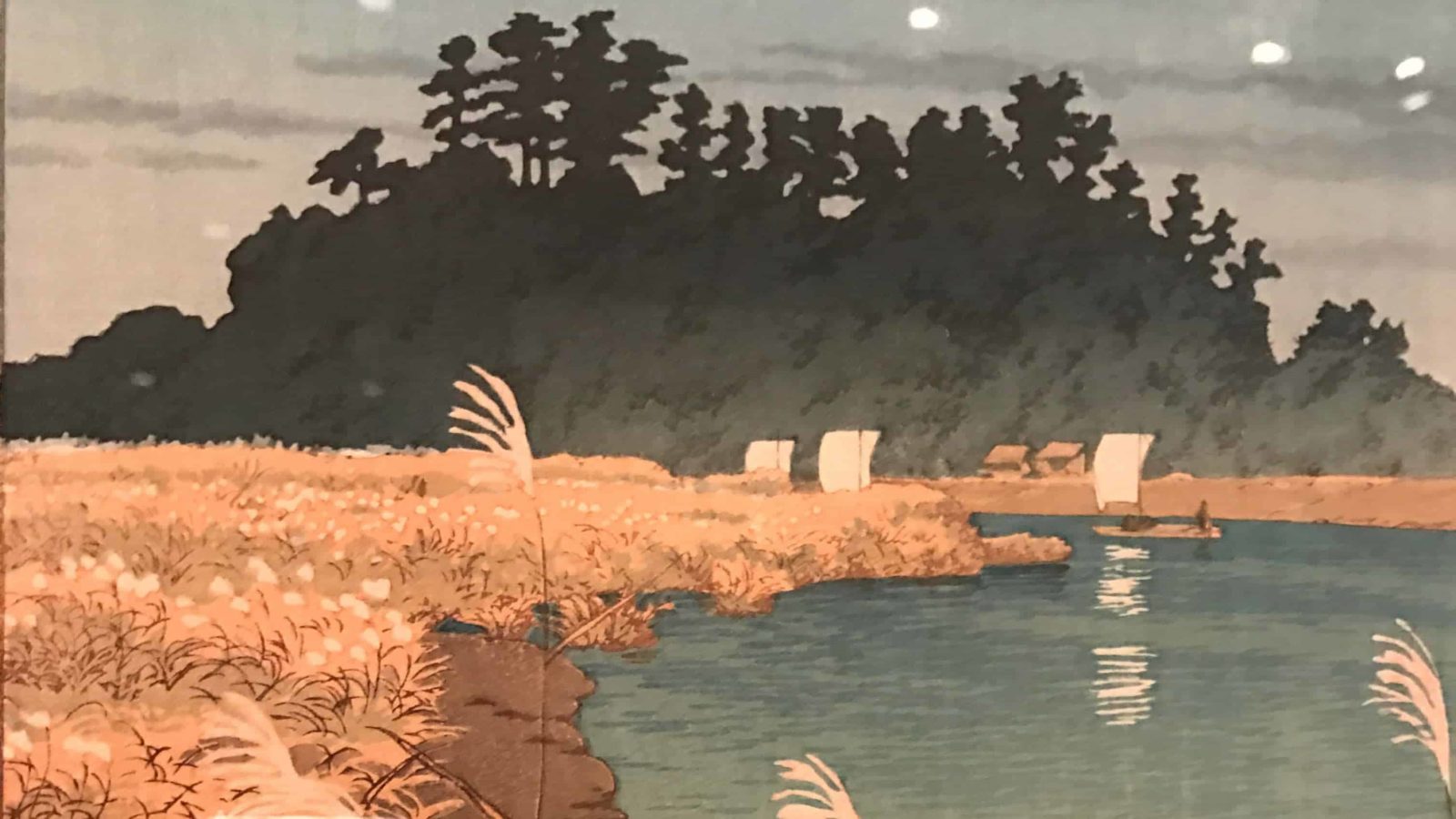“The blocks are cherry wood,” my mom said, looking closely at the tables set outside by the road and the woman wearing a baby in a sling.
“It’s a hard, dense wood,” my dad said.
She nodded, absorbed. “It would show precise marks.”
The night before, we had sat at a long, handmade table at Clover Hill, talking over the causes and distinct grains of spalted and tiger eye maple. Now we stood side by side taking in the man cupping a bowl of sweet potato soup and the magnolia light in the sky. It was early morning or late evening at the tea house at Mariko, on the coast road south and west of Edo, in 1833.
The tea house was a place for travelers to rest. And we were beginning a walk through Japanese Impressions in the show’s last week at the Clark Art Institute. I have come more than once this winter to sit with these images and wonder, as we wondered aloud, how a picture from ink on carved wood can have the shifting tones of a watercolor — that sky over Hiroshige’s scene on the Takaido Road, or the deep blue of Hasui’s bay nearby, and his wet stone shimmering in the rain. And in the first few seconds this weekend my parents told me something I didn’t know.

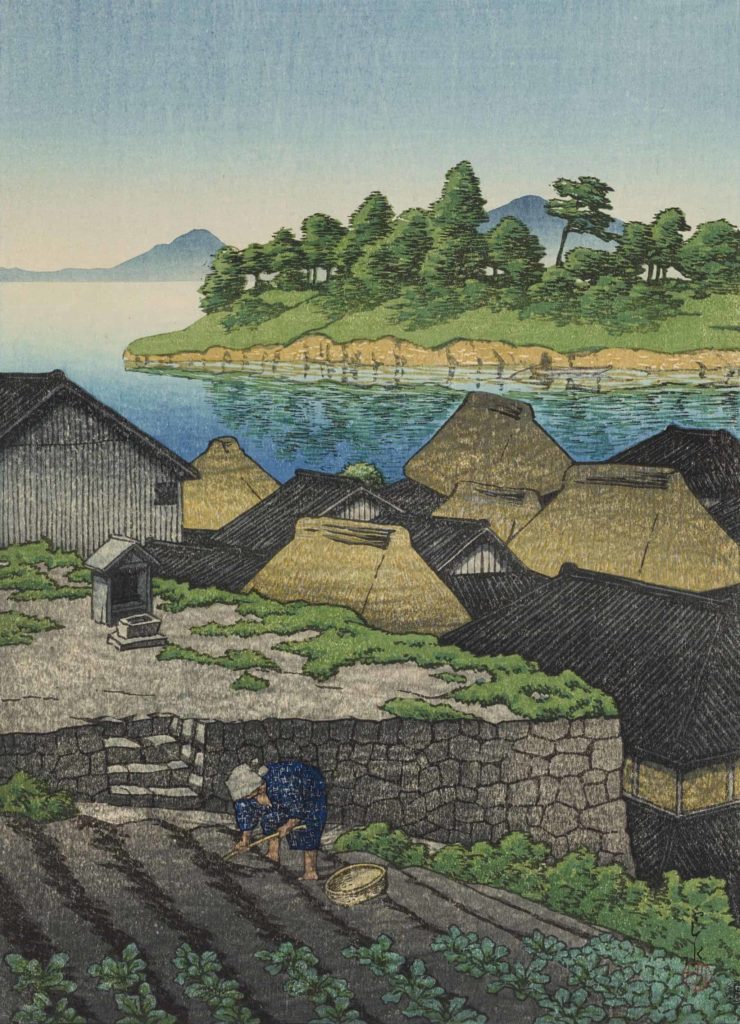
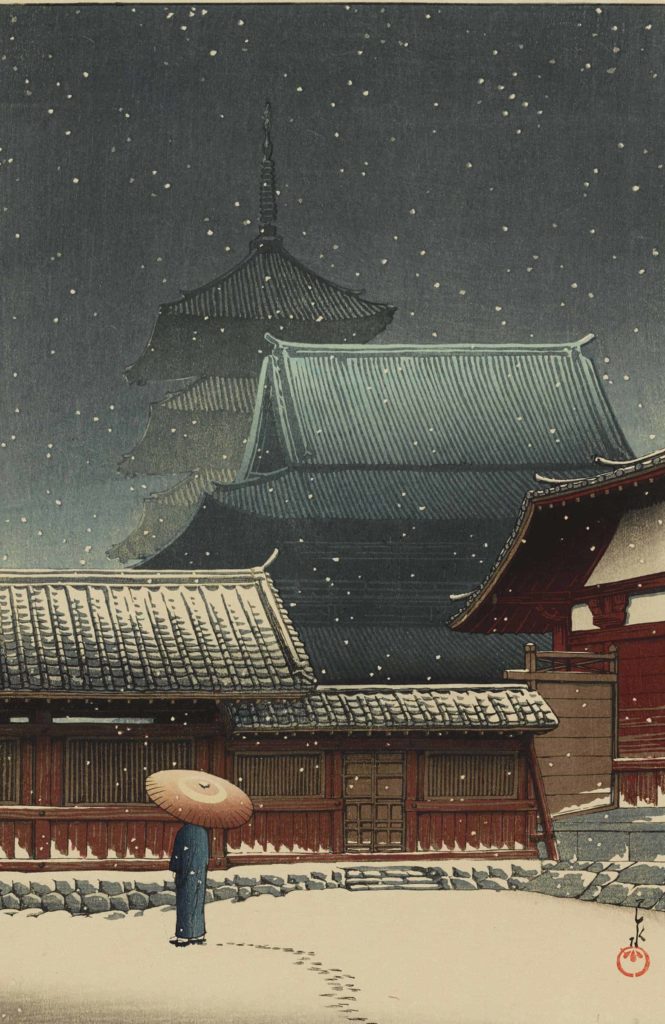
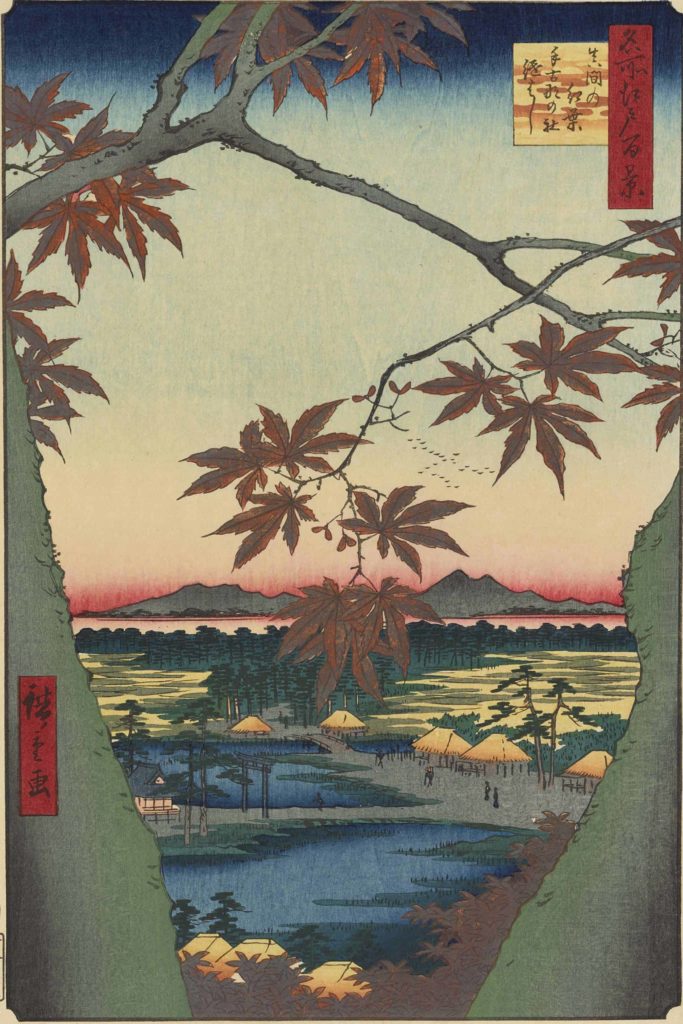


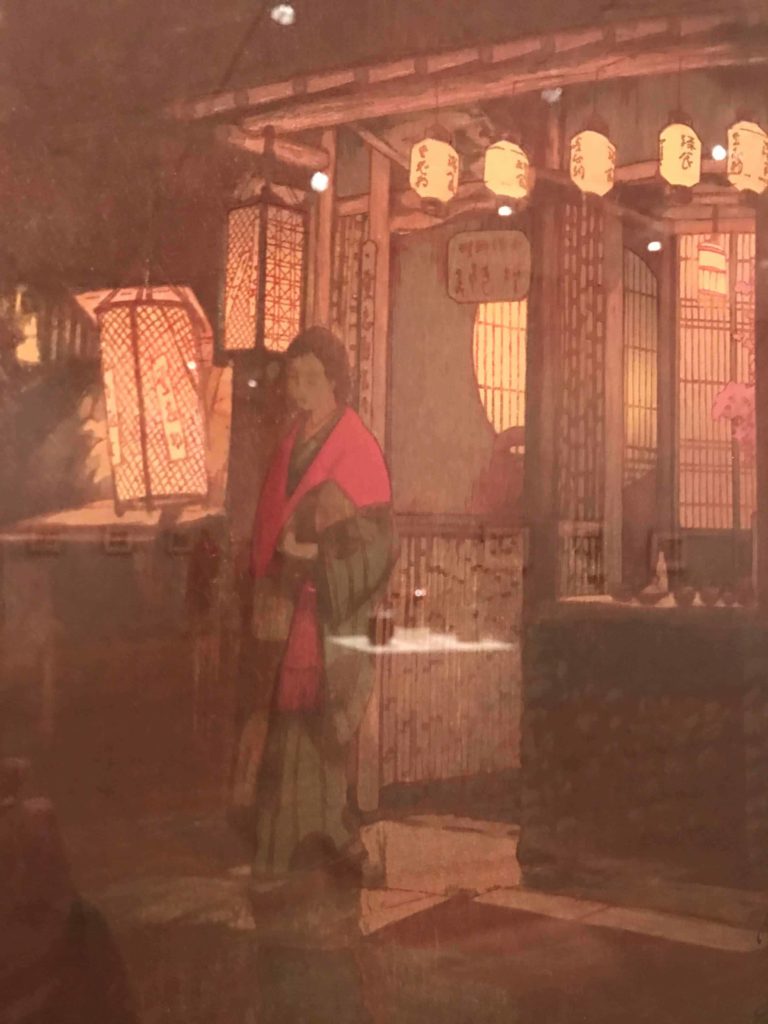
They have both worked with wood. My mom has made jigsaw puzzles from softer woods, basswood and pumpkin pine, and my dad has made cabinets, and a desk from the old cistern from his parents’ attic … They would know how it feels to shape cherry wood.
So I think about the artisans who carved these blocks. How fine do your gradations have to be, how carefully textured the surfaces, to show blowing grasses, flecks of geese in the distance, light on the water?
How large a cherry tree would you need to make blocks this size … and does the wood have significance beyond its qualities for holding a fine line, in a country that holds such deep affection for cherry blossoms?
And how, Joan and Mark asked, did the printers make sure the paper met the block at exactly the right points each time? A wood-block print is made from a series of impressions of colors, one on top of the other. Each new print, each new layer of ink, has to line up exactly with the colors already on the paper.
I do know that Hasui worked closely with the team who made his prints. Checking proofs and debating colors held up the publication of the print we are looking at now for four years. (I read about it in Kendall H. Brown’s “Water and Shadow” in the early winter dark a month ago. I came to the Clark’s renovated library for the first time, wanting to know some of these artists.)
Hasui also lived through the great earthquake in September 1929, and the fires that came with it devastated Tokyo — and destroyed many of his early wood blocks and prints. He may have lost family and friends then. It’s hard for me even to imagine.
And it gives a background to the night scenes in Kyoto and Tokyo that come later. They contrast with the village streets and remote temples and mountains in falling snow — these are dark backgrounds with light glimmering on wet streets, and intense as a fleet of lamps behind delicate panes of window glass.
When Yoshida Hiroshi painted these scenes, these quiet streets were vanishing. I read about this too, on another evening in the quiet room at the end of the exhibit. The earthquake levelled stretches of the old city of Edo, and modern Tokyo began to emerge in skyscraper steel. Hiroshi went looking for quiet places.
He worked with his blockmakers and printers too, and he did a good deal of the work himself. Maybe the feel of a block of cherry wood gave him pleasure. Maybe he oiled the wood to keep it from drying out. Maybe he ran his fingers over the surface, just to soak in the texture of it.
This is the third in a set of By-the-Way-style impressions of explorations in the Northern Berkshires. The reflections begin here and continue here.

